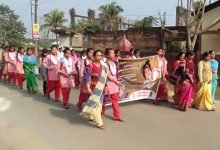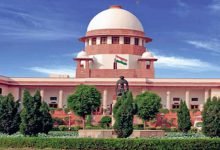Verdict of the Vedas – an interpretation with a difference!

Vedas, (meaning knowledge), Vedic rituals and its ancillary sciences called the Vedanga, were part of the curriculum at ancient universities such as Taxila, Nalanda & Vikramashila.
Itanagar
By Pradeep Kumar
Vedas (Rigveda, Yajurveda, Samaveda & Atharvaveda) are the oldest surviving scriptures still in use. The Vedic period, during which the Vedas were composed and compiled, lasted from approximately 1500 to 500 B.C.E., spanning the late Bronze Age and the Iron Age. Flood sums up mainstream estimates, according to which the Rigveda was composed from as early as 1200 BCE over a period of several centuries. By the time of Indian grammarian Panini, Buddha and rise of Mahajanapadas (great kingdoms), the Vedas were fully developed. Since composition of Vedas and oral Vedic tradition continued for centuries before they were compiled, organized and written down, they must have originated in 2nd millennium BCE. Michael Witzel gives a time span of c. 1500 BCE and c. 500-400 BCE.
Vedas, (meaning knowledge), Vedic rituals and its ancillary sciences called the Vedanga, were part of the curriculum at ancient universities such as Taxila, Nalanda & Vikramashila.
In 2017 issue of International Journal of Sanskrit Research – Anantaa – under ‘Veda vs. Tetragrammaton: Decrypting the greatest Enigma in History’, Milorad Ivankovic writes: “Since times immemorial man`s experience and perception of the world have been encoded by and stored primarily in the words of human language. Thus, neither genetic DNA analysis nor archeological artifacts, but only the words of human language can decode the true history and evolution of man, his beliefs, religious ideas and philosophical concepts. The Vedas being the most comprehensive source of authentic ancient knowledge provides the missing clues for deciphering enigmas and mysteries of the bygone eras, of which the greatest is known as the Tetragrammato, in Greek means (consisting of four letter in Hebrew and YHWH in Latin script, the four-letter biblical name of God of Israel. Common substitutions for Hebrew forms are hakadosh baruch hu (The Holy One, Blessed Be He), Adonai (My Lord), or HaShem (The Name)”.
Thus, the intellectuals have been interpreting Vedas ever since and perhaps continue to do so till the humanity survives. Writer Obi Bhattacharya has also attempted to scientifically interpret the concept of Veda, famous epics Ramayana and Mahabharata in his book Verdict of the Vedas, Volume-1, released recently, and working on the second volume.
The 405-page book is a master piece that unfolds the mystery of ancient texts in simplest terms citing examples for any commoner to understand. Conceiving the idea, having knowledge on Vedas, Ramayana and Mahabharata and giving written shape to its interpretation is a herculean task. But the author has succeeded visibly with the blessings of Devi Saraswati as proved by every paragraph.
The book is a sledge and once reading begins will take the reader to the end nonstop to justify the powers of words or knowledge. While lucidly explaining healing system with naturopathy still in practice in North East India, particularly in Arunachal Pradesh and skydiving practices by IAF officers, almost like copying straight from the bosom of this Himalayan state, known as Last Sanghi La on Earth. Few mind boggling excerpts are:
“Greed had gobbled up all senses of human ethics, while the society had drawn up derivations, devising ways and means for development with menacing measures moulded to a demanding dependence unavoidable for the word to distance itself from. In the name of that deformity, the term development had taken form. The drastic disarray thrust upon nature and the mother planet had been so deranging that her calls of distress was manifest in the ways she repulsed and expressed her dismay in various diversions and vagaries which showed up to take its toll. He had been a witness to it all. He had distanced himself all the more, going deep into hiding and seclusion, dedicating himself to the service of the All Supreme, practicing harsh patience, begging the Almighty to have mercy and forgive.
“But what was all this? He remembered the cave in the high mountains, thousands of kilometers away from his parent land, where he had been meditating. His senses had converged to reach that threshold of sentience where his identity formed a complete connectivity with the Supreme Consciousness. He had known nothing after that, as the trance had overtaken his senses and had him transcended over to a state of release from sensing any stimuli, perceptual or internal. His state of transcendence had absorbed him into nothingness, reaching a perfect state of meditation.
“It was in this state of nothingness where his subconscious self was trying to connect with the ultimate consciousness that he had found a sudden glow of light which had him engulfed. He felt his sense to go under a compelled seizure as his mind had reacted in trying to revert to its regular state of consciousness, but the conflicting compulsions prevented that from happening. Was it a function of the brain? The most intriguing of inventions that the Invisible Inventor had instituted into every human being!
“With that momentary revival, his mind reflected its signals in contemplation. The glow of light spreading all around him, covering him with its luminosity, reached into the interiors of his body with its penetrating power, illuminating him from within. What was it? His mind had taken to a frantic attempt to figure it out. Was it the final call that had been waiting for? The boon that he had been gearing up for patiently, praying for with all his heart, waiting in a suppressed silence , unable to express his yearning out loud.” …
“Wing commander Pankaj Chabbra glanced at the altimeter which showed 18, 6450 feet. The wind strck again, throwing in ahuge mass of snow and ice pellets inside the craft, that settled in a foot deep mass inside the open door….. The flying officer did soas the chopper whirred its way towards Siliguri Air Force base….
Greatest archer Arjuna after witnessing Kuru warriors in Mahabarata battle ground had downed his Gandiba bow telling Lord Krishna, his charioteer, that he cannot kill his own relatives. But had raised Gandiba again after Lord Krisha said: Right at the start of his revelations to Arjun>a, Shri Krishn>a categorical expressed a striking statement to let Arjun>a, comprehend and realize the reality behind everything that goes on in this mortal world, and that he was simply a medium who was to perform in accordance with that. Mentioned below is what ‘The Supreme Incarnate’ had uttered before his most intimate friend and disciple:
“Antavantaime
Nityasyoktah Sharirnah
Anashinoprameya sya
Tasmad yuddhasva bharat” (Atma amar hai, anant hai, uska naash nahi ho sakta hai. Kewal sharir nashwar hai…)
What had he meant? Why had he gone on to expand further upon the intricate details that seemed to be learning towards philosophical constructs only. Was this all that he was struggling? Some light fell upon it and some other concepts too in an event that extended into a sequence of developments leading to amazing revelations.









